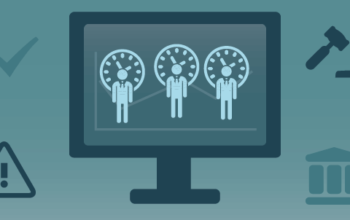
Do you have to be worried about employees’ compensation for distant workers?
In summary, yes.
Whenever your company expands or adopts a work-from-home coverage, it is a fantastic idea to have a fresh look in your employees’ compensation policy and procedures.
Recognizing which harms your employees’ compensation might insure, adapting your security program and upgrading your claims reporting procedure can aid your company manage injury claims more effectively in the era of distant work.
What exactly counts as a work-related accident in your home?
But, determining exactly what’s a work-related harm in your home can be tricky.
Generally, to have a compensable claim that’s accepted by your organization’s workers’ compensation carrier, the worker needs to maintain the course and scope of their occupation and the injury must arise from the job-related pursuits. As an instance:
- A worker with a hectic day in the computer that believes a strain in their knee or knee at the day’s end might have a compensable claim, based upon the condition, since they can claim they had been hurt while performing their job.
- For the exact same reason an employee that has a work-related bundle delivered to their residence, lifts it and hurts their spine could have a claim.
A distant worker who gets up to get a coffee, excursions in their furry friend on the way into the kitchen and has hurt might not have a legal claim. This type of situation can pose a grey region and might wind up being decided in court.
- An at-home worker who chooses a job break to get a treadmill run and has hurt while conducting will probably be unable to maintain workers’ compensation because of their injury.
- It is important to remember that it is not up to the company to ascertain whether an injured worker has a legal claim.
How do your company promote workplace safety as soon as your folks are distant?
One challenge as soon as your work force — or even only a couple of workers — changes to distant work is your carefully crafted office safety program might not be relevant to workers in your home.
By way of instance, administrative personnel working in a physician’s office or a study library may face dangers associated with obtaining and transferring paper documents, so their security program is centered on best lifting practices at the workplace. However, when those workers are getting documents from home, the hazard landscape changes.
You cannot understand what particular hazards may be present in every worker’s house, and it might be intrusive and reluctant to inquire. Instead, it’s Ideal to Concentrate on the injury dangers that many distant employees face regardless of business, for example:
- Repetitive movement stress
- Injuries Associated with poor posture and girth
These pose a specific threat when workers have had to suddenly shift to working in your home. Without a suitable desk and seat, they might be operating while sitting on a couch or in a table. This may be tolerable for a day or 2, however over the future it increases the danger of neck, arm and back injury.
Provided that you have people working remotely, your office safety program should highlight the importance of proper position, proper furniture positioning and other ergonomic practices.
What should you do when an employee tells you they’ve been hurt on the job at home?
Regardless of your emphasis on work-from-home security, injuries may occur.
- The date and time Once the worker was hurt
- The action which preceded the harm
- The nature of the accident
It is ideal to collect the worker’s report regarding their injury as soon as possible following the incident and also to pass it with your insurance carrier immediately. That rate permits the insurance adjuster and the worker to have their follow-up talks while the details are still new.
As soon as you gather the worker’s first report and file it along with your employees’ compensation insurance provider, the thing goes for their own adjuster. This is the individual that has the knowledge and resources to choose whether a claim is not or work-related, based on their analysis and the law from the country where the accident occurred.
What exactly does a workers’ compensation evaluation involve?
The adjuster will get in contact with the worker for a comprehensive interview and also to accumulate some supporting documents.
- Obtain a written or recorded statement from the worker describing the accident and how it occurred.
- Ask that the worker sign a medical release consent form to acquire copies of any medical records regarding the injury.
- Conduct a meeting with the company to confirm that the worker’s statements to them as well as the adjuster align.
With that advice, the adjuster can determine the situation is obviously work-related or certainly not due to work activities.
Whether the claim Ought to Be denied or accepted
How powerful their situation is when a denial is contested in court
If the claim goes to court, your nation’s written legislation and existing case law — the way preceding similar claims are judged — will determine the results of the situation.
- How do you guarantee your coverage addresses employees’ compensation for distant workers?
It is sensible to regularly examine your employees’ compensation policy to identify strategies to reduce prices and also to ensure that your policy is best for the way that your company is evolving and growing.
Now is also a fantastic time to examine your company’s claims reporting and management system, to make sure it addresses employees’ compensation for distant workers.



